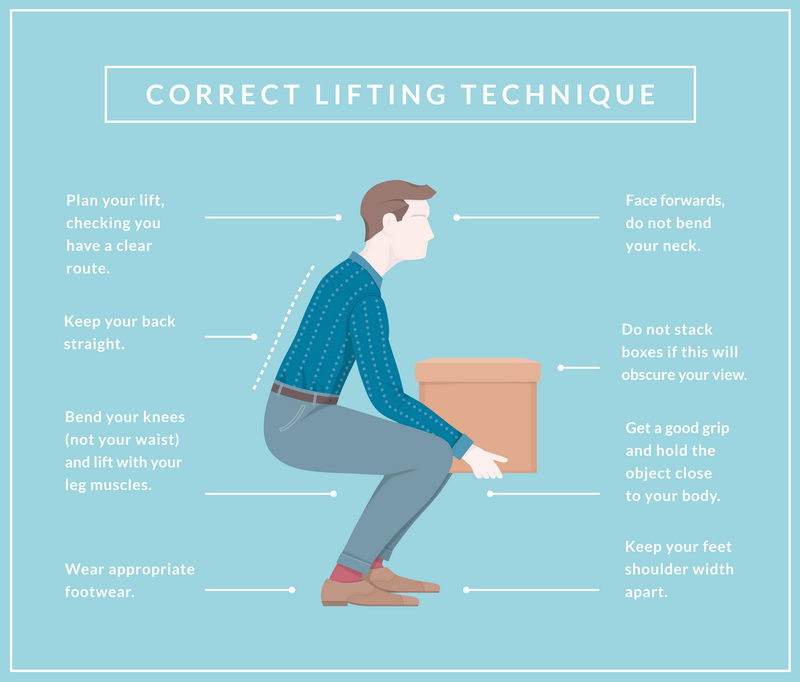Construction sites are being targeted as part of a health inspection initiative supported by the 'Work Right Construction: Your health. Your future' campaign.
 The campaign is raising awareness of health issues in relation to moving and handling materials to improve the long-term health of those working in construction.
The campaign is raising awareness of health issues in relation to moving and handling materials to improve the long-term health of those working in construction.
Starting on Monday 3 October 2022, site inspections focusing on moving and handling construction materials will be checking employers and workers know the risks, plan their work and are using sensible control measures to protect workers from injuries and aches, pain and discomfort in joints, muscles and bones known as musculoskeletal disorders (MSDs).
An estimated 40,000 construction workers suffered work-related MSDs last year. These injuries can have a serious impact on workers’ ability to perform tasks; their quality of life; and in some cases, their ability to stay in work and earn a living. Many can and do suffer from long-term pain and discomfort.
Act now to protect workers’ health Employers have a legal responsibility to protect workers from ill health and should involve them in managing the risks to their health just as they would with safety.
Workers should not have to accept these injuries and potential long-term suffering as an inevitable part of construction work. They should talk to their employer about the risks and the measures in place to protect their health.
As an employer, you must protect your workers from the risk of injury from hazardous manual handling in the workplace. Manual handling means transporting or supporting a load by hand or bodily force. It includes lifting, putting down, pushing, pulling, carrying or moving loads. A load can be an object, person or animal.
Overview
The law sets out how employers must deal with risks from manual handling:
- avoid hazardous manual handling, so far as reasonably practicable
- assess the risk of injury from any hazardous manual handling operations that cannot be avoided
- reduce the risk of injury from hazardous manual handling to as low as reasonably practicable
The weight of a load is important, though the law does not set specific weight limits.
In some cases, you must provide information about the weight and position of the centre of gravity of each load, if there is a risk of injury and it is reasonably practicable to do this.
Avoid hazardous manual handling
You can avoid hazardous manual handling operations by:
redesigning the task to avoid moving the load
automating or mechanising the process
The best time to decide about mechanisation or automation is when you design plant or work systems. Design the layout of a process so there is very little movement of materials.
Consider introducing, for example, a conveyor, a chute, a pallet truck, an electric or hand-powered hoist, or a lift truck to reduce the risk of harm. Mechanical aids can also help reduce or eliminate risks from manual handling.
Assess manual handling you can't avoid
Assess the risk of injury from any hazardous manual handling operations that cannot be avoided.
You should consider the task, the load, the working environment and individual capability, for example:
- the postures adopted
- how far the load is lifted, lowered or carried
- the frequency of the task
- the weight of the load
- the nature of the load (for example hot, sharp or slippery)
- cramped work areas
- poor floor surfaces
- poor lighting, extremes of temperature
- workers' strength, fitness and underlying medical conditions (for example a history of back problems)
Also, look out for:
- workers breathing heavily and sweating
- workers who complain of excessive fatigue
- reluctance to do a particular task
- the availability of equipment to help with the lift
Consult your workforce
Consult and involve your workforce in your risk assessment. They and their representatives know the risks in your workplace and may have practical solutions. Operators can often tell you which activities are unpopular, difficult or hard work.
Reduce the risk of injury
Measures to control risk will vary depending on the task. Reduce the risk of injury from hazardous manual handling operations you can't avoid. Where possible, provide mechanical help, for example a sack trolley or hoist. Where this is not reasonably practicable, explore changes to the task, the load and the working environment.
If manual lifting is the only option then there are things you can do to reduce the risk, including:
- make the load smaller or lighter and easier to grasp
- break up large consignments into smaller loads
- modify the workplace to reduce carrying distances, twisting movements, or the need to lift things from floor level or above shoulder height
- change the work routine to avoid excessive work rates and tight deadlines
- improve the environment – more space, better flooring, extra lighting or changing the air temperature can make manual handling easier and safer
- make sure the person doing the lifting has been trained to lift as safely as possible
Training
Training can be important in raising awareness and reducing risk, but it won't ensure safe manual handling on its own. You should first design the manual handling operations to be as safe as reasonably practicable. You should also monitor and review procedures to make sure workers understand and apply them.
Training should be relevant to the type of work carried out and should cover:
- manual handling risk factors and how injuries can happen
- how to use mechanical aids
- how to carry out safe manual handling, including good handling techniques
- systems of work relevant to the worker's tasks and environment
- practical work so the trainer can identify anything the trainee is not doing safely and put it right
- The content of any training in good handling technique should be tailored to the tasks the workers carry out.
EC Safety Solutions offer various Manual Handling training courses:
QA Level 2 Award in Safe Moving and Handling (RQF) is a regulated and nationally recognised qualification designed for those who work, or intend to work, in a role that involves manual handling. candidates will learn the key principles of manual handling and how to apply these to their workplace. They will also practise a wide range of techniques, ensuring that they leave the course confident and proficient in moving and handling.
Alternatively we alos offer an eLearning Manual handling course which outlines exactly what constitutes manual handling and covers the regulations and legislation that apply to manual handling tasks. It then goes on to cover safe handling techniques and how to develop good habits in relation to manual handling. It finishes off by introducing some practical solutions and the use of mechanical aids
For more information on the courses we offer contact Steve W in the office on 08001930246 or email [email protected]

News Archive
HSE News

.jpg)